Play-based learning is a term used in education to recognize how children learn and begin to discover the world around them through play. It is built on the foundation that child-led play and inquiry based activities are critical components of learning and development in the formative years of early childhood.
Play-based learning stood out as the number one teaching methodology being implemented in early childhood education in 2024. The concept of play-based learning is not new to any educator and it’s popularity in preschool curriculum has surged due to how it authentically encourages young children to grow, learn and explore though play. Integrating play into the preschool curriculum is not merely about allowing children free time; it’s an educational approach within early childhood education where the curriculum offers intentional learning experiences that are all built on the solid foundation and understanding of play.
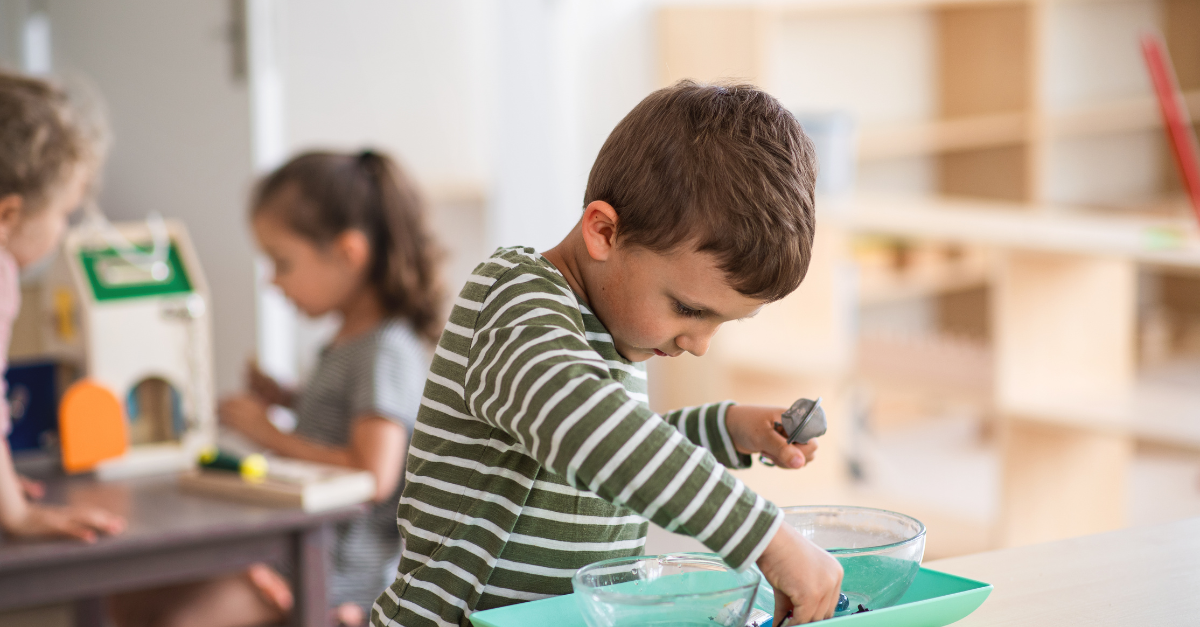
This blog dives into how to effectively implement play-based learning in preschool and childcare settings, ensuring that young children benefit fully from their preschool curriculum and early childhood classroom.
Understanding play-based learning
Before diving into the implementation strategies, it’s crucial to grasp what play-based learning entails. At its core, this approach is grounded in the belief that children learn best through play, a natural activity that supports their developmental milestones. Play-based learning is characterized by activities chosen by children, guided by their interests, and ultimately facilitated by the teacher as a co-learner and explorer with them. In play-based learning there is no right or wrong way for a child to engage in play or explore their surroundings and manipulate the learning materials. Their interests guide their choices, and it is through this agency that children actively engage in learning alongside their peers and educators.
It is widely known that play-based learning supports a child’s developmental continuum in many aspects. Play-based learning has been linked to the development of many skills such as problem solving, collaboration, critical thinking, creativity and confidence. It is also highly connected to cognitive development, physical development, social emotional skills, language and literacy and self-awareness.
The role of the preschool curriculum in play-based learning
The preschool curriculum creates the foundation upon which play-based learning is understood, built and ultimately implemented in an early learning environment. It outlines the goals and objectives of the lesson plans created, including how these learning experiences are linked to cognitive, social-emotional, and physical growth. Incorporating quality play opportunities into the curriculum requires a delicate balance between intentional learning experiences that have been thought through by a child care professional, and then how individual children will be given the freedom to explore the activity while guiding their own unique learning journey.
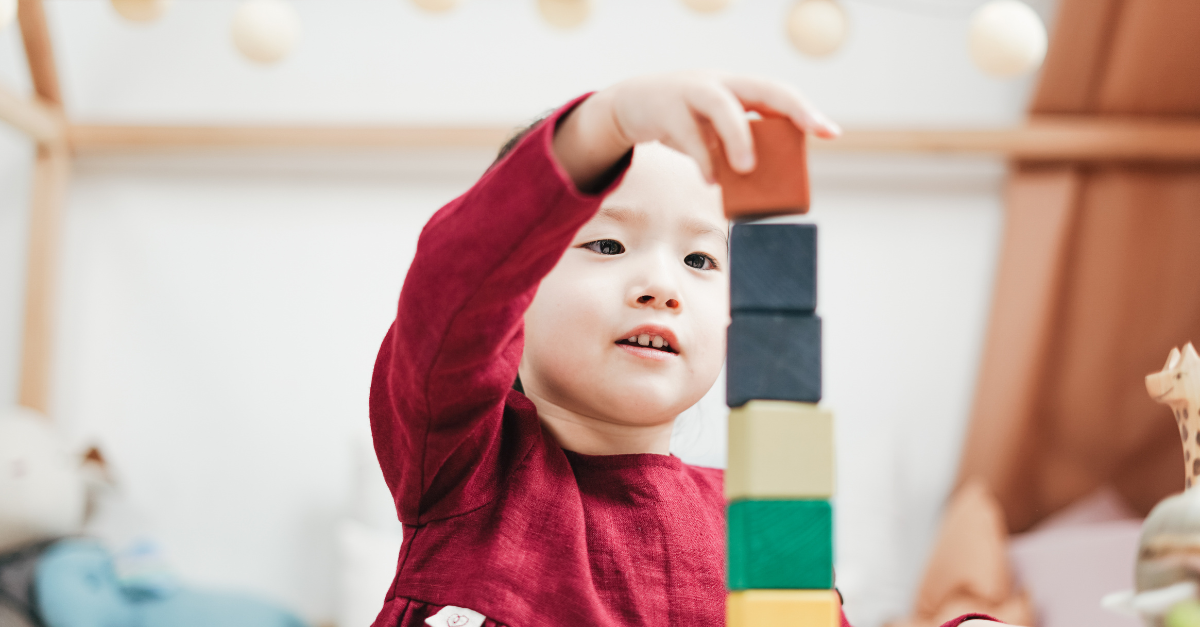
Designing a play-based curriculum
A play-based preschool curriculum is developed by an educator from classroom observations and interactions with children, and is ultimately created based on children’s needs and interests. When creating play-based lesson plans, the teacher has educational goals and milestones in mind based on their required curriculum objectives and knowledge of early education, but the key is that it is responsive and flexible based on how the children choose to engage with it.
Creating a play-based preschool curriculum involves mapping out a framework that supports various types of play, such as sensory play, imaginative play, and physical play, and then opening up the space to let children take the lead.
When supporting play-based learning, it’s crucial to remember a few essential elements: provide children with ample space to explore using both their bodies and minds, remain cognizant of specific learning objectives while selecting mentally stimulating materials, and uphold classroom rules without overshadowing their play with adult expectations.
Aligning curriculum with unique child development goals
The preschool curriculum should reflect the developmental stages of the individual children in the classroom. Activities must be age-appropriate and designed to support and challenge their growing abilities. For instance, while younger children might focus on fine motor skills through playdough manipulation, older preschoolers could engage in more complex socio-dramatic play, which encourages language development and social skills.
Therein lies the beauty of a play-based learning environment, while the educator creates the environment, activities remain flexible based on the unique needs, interests and developmental stages of each child. No ability is viewed as better than another and there is no right or wrong way to play in the classroom community, fostering a welcoming and safe learning environment for every single child.
The role of the preschool teacher in play-based learning
The preschool teacher plays a pivotal role in facilitating play-based learning. Beyond supervision, teachers can actively engage with children, guiding their play without leading it. This involves observing children’s interests, asking open-ended questions, and providing resources that deepen their exploration.
Creating a conducive learning environment
The classroom environment should be inviting and rich with materials that stimulate children’s curiosity. Materials should be kept at the children’s level, and arranging the space into distinct areas, such as a reading nook, a science corner, and an art station, encourages children to explore different interests and engage in various types of play.
When crafting these environments, avoid overcrowding areas or overwhelming children with an excess of toys. Genuine play-based learning thrives on children’s freedom to chart their own course each day. This could mean sprawling on the floor for a self-made sensory exploration, seeking out a cozy spot to read or construct with LEGO, or diving into arts and crafts activities. Educators can foster such high-quality play opportunities while ensuring the space remains conducive for exploration without overstimulating children’s mental capacities.
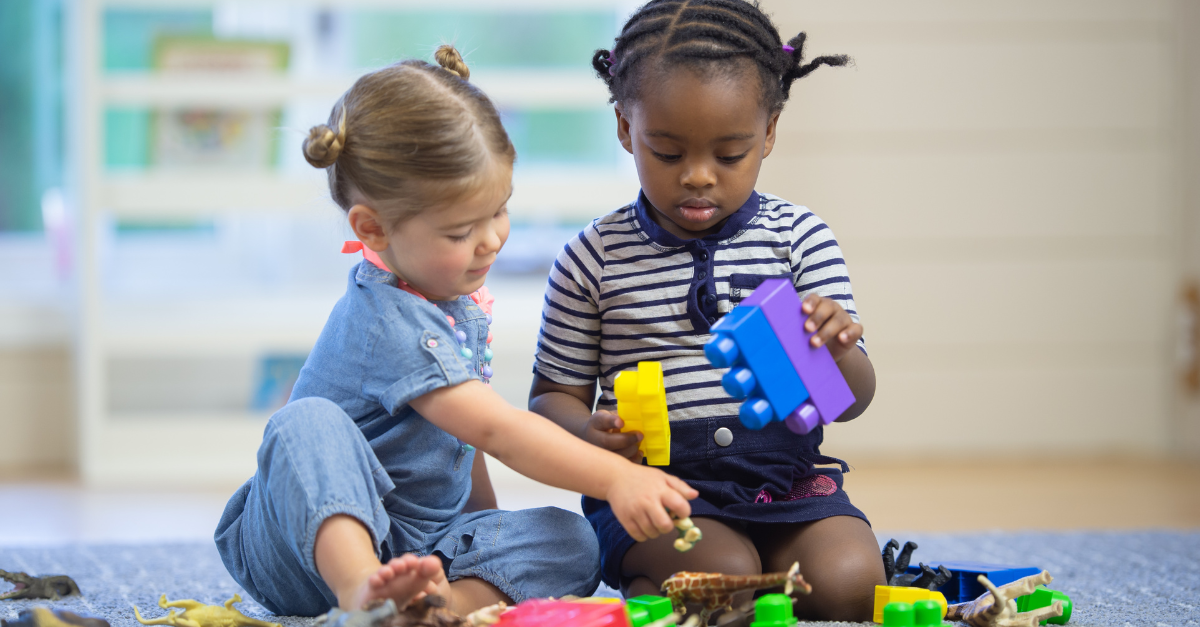
Encouraging positive relationships and a strong classroom community
Fostering a sense of belonging and community within the classroom is essential for play-based learning. When children feel safe and valued, they are more likely to take risks and explore new concepts. Child care providers can promote positive relationships by facilitating group activities and inviting children to participate, encouraging teamwork, and modeling respectful communication.
The impact of professional development
Professional development is crucial for educators implementing play-based learning. This educational approach has been a popular topic of discussion for much of the 21st-century and its popularity has led to an array of new research. Staying abreast of new knowledge and best practices is a big commitment for educators, and finding time to accomplish required training hours is no easy feat. Through workshops, courses, and peer collaboration, teachers can stay informed about the latest research and up-to-date on the newest resources designed to support play-based learning.
Staying informed about play-based learning with online learning opportunities
A deep understanding of child development allows teachers to tailor the play-based curriculum to meet the needs of the unique children in their care. Professional development opportunities can offer insights into developmental milestones, behavioral management strategies, and ways to support diverse learners.
Online learning opportunities support educators in their personal growth journey by allowing educators to select the courses most applicable to them. By staying informed through online learning opportunities, educators can enhance their ability to create nurturing environments where children can explore, discover, and learn through play. Embracing these resources fosters a deeper understanding of the value of play-based learning, empowering educators to cultivate rich and meaningful educational experiences where they seamlessly build play into the daily routine.
Building meaningful learning experiences
Professional development can also provide teachers with strategies to create more meaningful learning experiences through play. If you have been in the classroom for a while, it can be easy to get stuck in your ways. Ongoing learning helps teachers to challenge any widely held expectations and begin to open their mind to new ways of teaching and learning. This might include new techniques for integrating literacy and numeracy into play activities, ways to use technology effectively, and methods for assessing children’s learning and growth of developmental domains in a play-based context.
The children we are teaching today are growing up in a new world, and this new world is asking for different skills from them than we might be used to in the past. In order to properly support children in their future, we need to acknowledge who they are today and the time they live in. This requires intentionality on the part of educators to stay up-to-date with what children need and how they learn best.
Practical tips for implementing play-based learning
Implementing play-based learning requires thoughtful planning and ongoing adjustment. Here are practical tips for teachers in early childhood education to implement high-quality and meaningful play-based learning.
Follow the children’s lead
Observing children’s play and interests and following their lead is key to providing relevant, engaging and true play-based learning opportunities. This means setting up the learning environment in a way that is flexible and responsive to how the children choose to engage with it. It means teachers cannot get stuck in a planned learning experience and need to be able to open their minds to spontaneous play and learning from the themes that emerge. Following the lead of the child is the most important way for an educator to truly implement an authentic and impactful play-based pre k curriculum.
Integrate learning goals into play
Identify ways to incorporate the preschool curriculum’s learning goals into play activities. For example, if the goal is to improve fine motor skills, activities like cutting, drawing, and modeling with clay can be presented as play options. Source high-quality and stimulating learning materials for children to use. Lay the materials out or leave them in accessible areas for the children to choose from, and let them choose how to engage with the materials.
Use open-ended materials
Provide materials that can be used in various ways, encouraging creativity and problem-solving. Items like blocks, fabric scraps, and natural materials can be transformed by children’s imaginations into countless scenarios and objects.
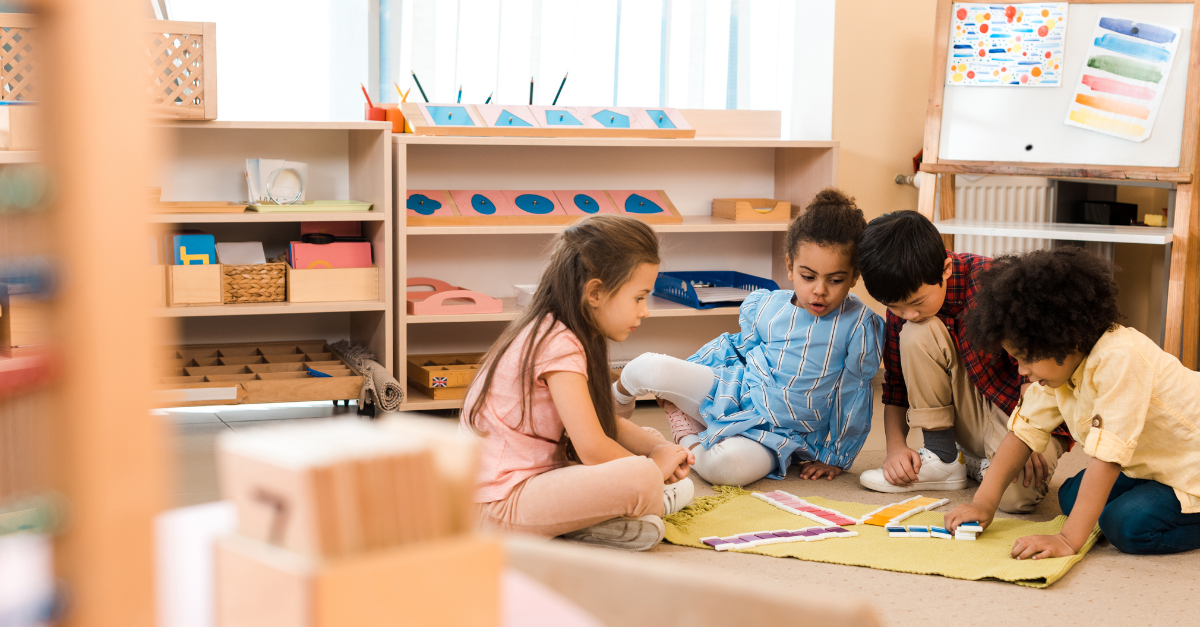
Keep the play space open
Do not overcrowd the learning environment with an abundance of toys and materials, which can be overstimulating. Sometimes we forget that in reality, play does not require any materials, so why not leave some space for children to simply explore the environment with their body.
Document and reflect on play
Early childhood educators should keep records of children’s play, noting observations that highlight learning, children’s interests and their development. Use these insights to reflect on the effectiveness of your play-based approach and to plan future activities.
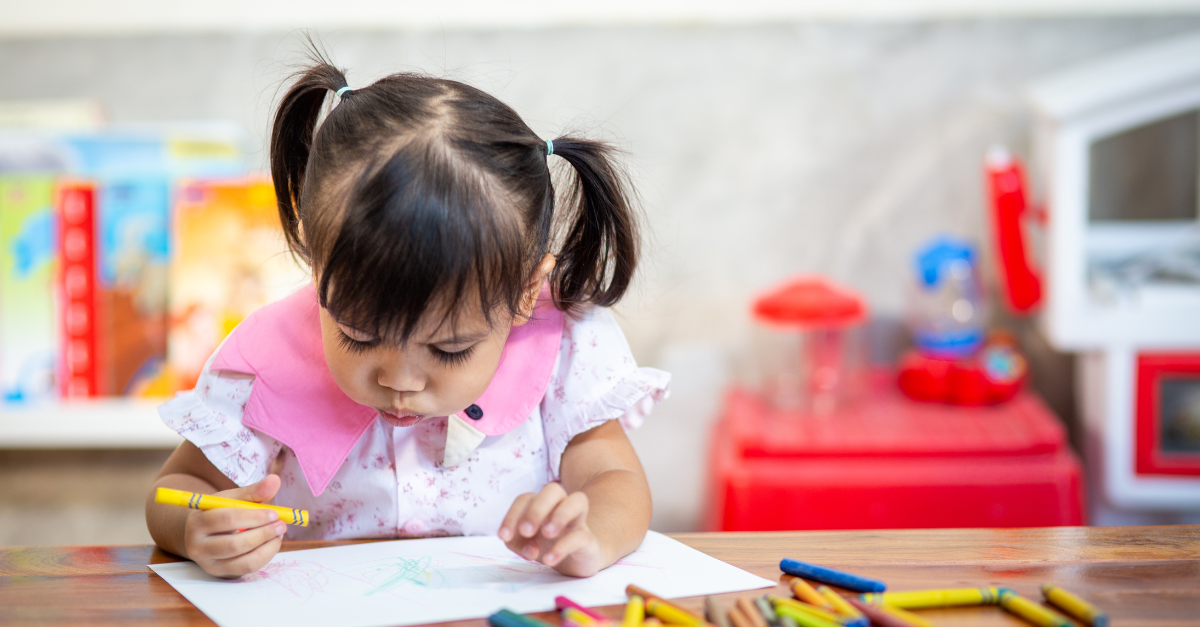
Interested in bringing high-quality and meaningful play-based learning experiences into your preschool curriculum? Learn more about Lillio Curriculum [Powered by FunShine Express] by clicking here!



